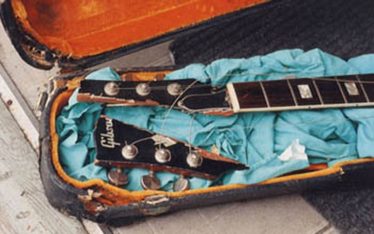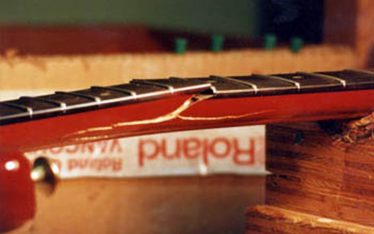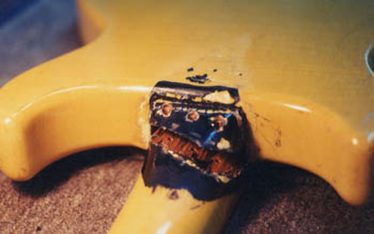Electric Guitar | Fender Telecaster
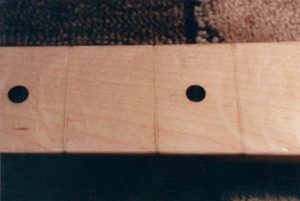
The Fender applies finish after the frets are installed on a maple neck. Especially on the 1970s maple neck, the polyurethane finish is so thick that half of the fret height is buried in the finish. That’s why, in the case of frets that are worn or dressed, it is hard to play because the frets are very low in height. And also you have to refinish or touch up the fretboard whenever refretting is done. This is a waste of time and money, and not environmentally friendly either. Our solution is to apply finish before fretting.
After all the frets are removed, the fret slots should be filled with wood or some kind of filler. Next, the fretboard radius and neck relief should be adjusted before applying the finish. If you apply the finish without filling the fret slots, then the thickness of the finish will be uneven, especially on the edge of the fret slot, so you can’t expect a neat job.
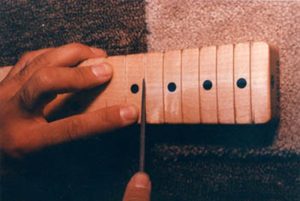
Choosing the type of finish is subject to personal taste. Some like a hard, durable finish such as polyurethane or epoxy finish. Others prefer traditional nitrocellulose lacquer, which is not as durable as a poly finish and turns yellow as time goes by. It’s hard to say which is better; both have advantages and disadvantages. After the finish was completely dry, the fret slots were re-cut and all slot edges were filed down to prevent chipping off the finish when refretting.
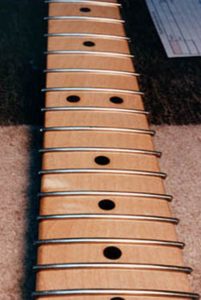
The advantage of applying finish first before fretting is that the frets won’t lose their height, it looks neat and tidy, and, best of all, it’s so easy to refret in the future and much cheaper, which is a big advantage for both the owner and the repair person.
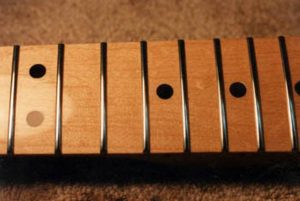
In this case, I sprayed on an amber color after refretting.
This coloring could be done before refretting, depending on what the owner wants. If you color after refretting, the finish should be thin and you should remove the finish on the frets afterwards.
Other posts of refretting work: Refinishing and refretting with Gibson style binding







